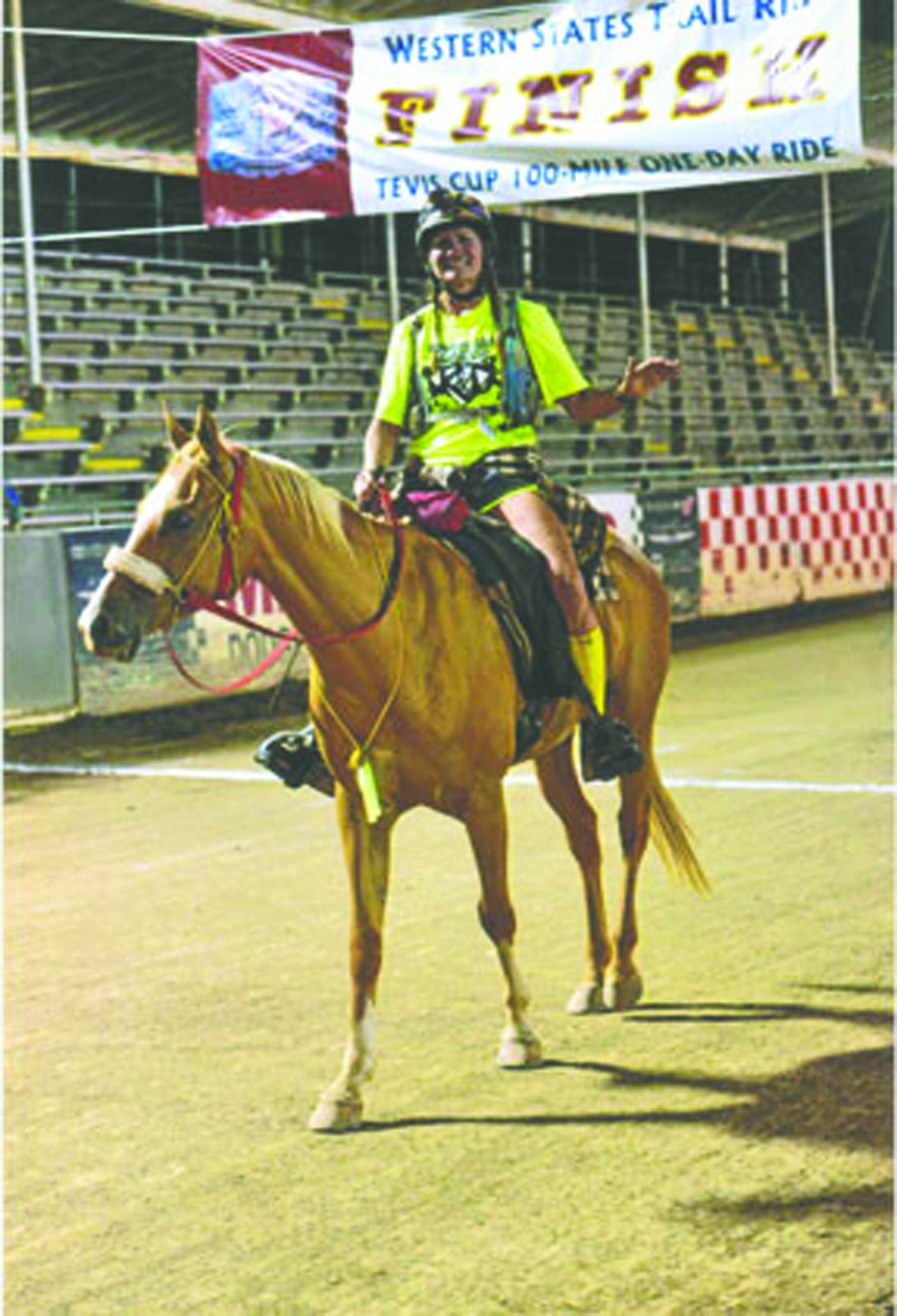NEIGHBOR AND FELLOW equestrian Lisa Preston has hit a solid home run with her new book, The Ultimate Guide to Horse Feed, Supplements and Nutrition.
Preston, who has an advanced certificate in equine nutrition, offers a thoroughly researched comprehensive and science-based guide to the do’s and don’ts of horse nutrition.
When I went to her house to check it out, she excitedly leafed through the book to showed me dozens of science-based charts, tables and illustrations that make it so easy for horse owners such as myself to understand.
In the back of the book is a pull-out chart that makes it easy to find your horse’s weight and figure out how much feed he needs.
She’s also made it easy to read the labels on the feeds and supplements we give our horses.
For instance, I thought I was avoiding a high-grain- and high-sugar-based feed with supplements through a grass-based pellet until she pointed out the first ingredient listed is wheat middlings.
Other grains in the feed are corn and an oat by-product, hulls.
So, just because it looks green doesn’t mean it’s all grass or alfalfa.
I learned my horses actually don’t require all those extra supplements to be healthy.
In her book, she gives a thorough explanation — and the science behind it — as to what does work and what really doesn’t despite what the advertisements tell you.
She feeds her own horses grass hay (always available in slow feed hay nets) and salt, plus alfalfa pellets and beet pulp pellets.
I can attest her horses look healthy and have shiny, beautiful coats.
An endurance rider, her horses are in tip-top shape and highly conditioned.
She shared with me that 30 years before she competed in the Tevis Cup 100 Miles One Day Ride on Savvy, a Sequim woman from a pioneer family, Eva Taylor, did it on a mule named Hugo and earned the title of best conditioned horse there.
It was the first time a mule was given that award.
Taylor and Hugo are featured as the mule story in the donkey/mule section.
It’s one of the nine stories she shares that illustrate true-life situations — athlete, broodmare, growing baby, senior, draft and pony, starved and overweight.
Pictures of several local folks and/or their horses are also featured in her book.
I loved seeing a picture of my dog’s veterinarian’s son, Austin Allen.
And on page 55, she even has a picture of my Lacey and Indy in their overgrazed pasture.
While she doesn’t include my name, she is calling me out because of my poor pasture management.
Because of it, my pasture grass is stressed and has a lot of weeds, including daisies, buttercup and Canadian thistle (the latter two can be toxic to horses).
Thing is, I know how to avoid an overgrazed pasture.
I should not allow them to be on a pasture with less than 4 inches of grass.
I should mow before the grass gets mature and full of stems, and I should weed often and early.
Most important, I should keep my horses in a smaller sacrifice area, meaning the main area they live in, and then have a temporary fence to divide the pasture up into smaller areas so I can use a rotational system to rest the land.
So, you might ask, if I’ve known what to do, why haven’t I done it?
I really can’t blame it all on my multiple sclerosis.
While it frequently zaps my strength and leaves me in a knocked-down-with-fatigue state, it’s really due to a few years of tragic personal events that took my attention away from giving the pasture its proper care.
The good news is I will soon be able to start over again because I’ll soon be moving to a home with fresh pastures in Happy Valley.
And if I ever let my pastures get even close to being overgrazed, feel free to give me a good tongue lashing.
Preston’s book is available on Amazon for $17.53 for a hardcover copy.
________
Karen Griffiths’ column, Peninsula Horseplay, appears the second and fourth Sunday of each month.
If you have a horse event, clinic or seminar you would like listed, please email Griffiths at kbg@olympus.net at least two weeks in advance. You can also write Griffiths at PDN, P.O. Box 1330, Port Angeles, WA 98362.
